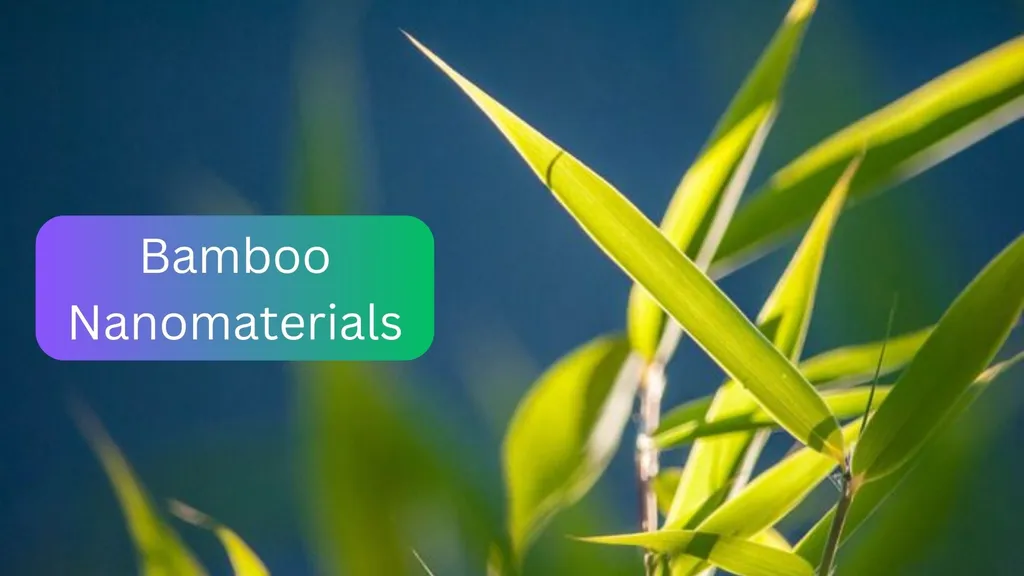
Bamboo, celebrated for its strength and rapid growth, is gaining traction as a renewable energy source. Its ability to thrive in diverse climates and regenerate quickly makes it an ideal candidate for sustainable biofuel production. As the world seeks alternatives to fossil fuels, bamboo’s potential to power homes and vehicles through bioenergy is sparking interest. This blog explores bamboo’s role in renewable energy, diving into its production processes, benefits, and challenges, while highlighting its promise for a greener future.
Why Bamboo for Renewable Energy?
Bamboo’s rapid growth cycle—reaching maturity in 3-4 years—sets it apart as a highly renewable resource. Its high lignocellulosic content, rich in cellulose, hemicellulose, and lignin, makes it a prime feedstock for bioenergy. Unlike traditional crops, bamboo thrives on marginal lands, requiring minimal inputs while absorbing carbon dioxide, supporting biodiversity, and preventing soil erosion. These qualities align with global sustainability goals, positioning bamboo as a key player in reducing reliance on fossil fuels.
Bamboo as a Biomass Powerhouse
Bamboo’s fibrous structure and fast regeneration make it a standout biomass resource. It can be converted into various biofuels—bioethanol, biobutanol, biogas, and solid fuels like pellets and charcoal—each serving distinct energy needs. These biofuels offer a carbon-neutral alternative, reducing greenhouse gas emissions compared to fossil fuels. Beyond energy, bamboo cultivation fosters economic growth in rural areas through job creation and supports ecological restoration, making it a cornerstone of sustainable development.
Biofuel Production Processes
Bamboo’s versatility shines in its conversion into biofuels through thermochemical and biochemical processes:
Thermochemical Conversion: Techniques like pyrolysis, gasification, and combustion transform bamboo into bio-oil, syngas, and heat. Pyrolysis, conducted in an oxygen-free environment, produces bio-oil and biochar, the latter doubling as a soil enhancer. Gasification yields syngas for power generation, while combustion provides direct heat for industrial or residential use.
Biochemical Conversion: This process uses enzymes and microbes to break down bamboo’s lignocellulosic structure into fermentable sugars. These sugars are then converted into bioethanol or biobutanol via fermentation, or into biogas through anaerobic digestion. Bioethanol serves as a gasoline alternative, biobutanol offers higher energy density, and biogas provides methane-rich fuel for heating or electricity.
Types of Bamboo-Based Biofuels
Bamboo’s adaptability enables the production of diverse biofuels:
Bioethanol: Produced through enzymatic hydrolysis and fermentation, bioethanol is a clean-burning fuel for vehicles, reducing emissions significantly.
Biobutanol: With higher energy content than ethanol, biobutanol blends seamlessly with existing fuel infrastructure, offering a robust alternative.
Biogas: Anaerobic digestion of bamboo biomass yields methane-rich biogas, ideal for electricity, heating, or even vehicle fuel after refinement.
Solid Fuels: Bamboo pellets, briquettes, and charcoal provide efficient, low-emission alternatives for heating and industrial applications. Bamboo charcoal also serves as a water purifier and soil enhancer.
Environmental and Economic Benefits
Bamboo biofuels offer compelling advantages:
Carbon Neutrality: Bamboo absorbs CO2 during growth, offsetting emissions during fuel use, creating a closed carbon cycle.
Sustainable Harvesting: Its rapid regeneration reduces deforestation pressure, supporting reforestation and soil health.
Economic Opportunities: Bamboo cultivation and processing create jobs, particularly in rural areas, while its fast growth ensures quick returns on investment.
Biodiversity Support: Bamboo plantations enhance ecosystems, fostering biodiversity on degraded lands.
Challenges in Bamboo Biofuel Production
Despite its promise, bamboo biofuel production faces hurdles:
Technological Barriers: Optimizing conversion processes to improve yields and reduce costs requires ongoing research.
Feedstock Variability: Differences in bamboo species and growth conditions affect biomass quality, complicating production.
Economic Viability: High initial costs for cultivation and processing, coupled with competition from subsidized fossil fuels, pose challenges.
Logistics: Transporting and processing bamboo quickly to preserve its quality adds logistical complexity.
The Future of Bamboo in Renewable Energy
Bamboo’s potential in renewable energy is vast, with advancements in conversion technologies and sustainable cultivation practices paving the way. Policy incentives, such as carbon credits, could accelerate adoption, while research into integrated biorefineries promises higher efficiency. As global demand for renewables grows, bamboo’s ability to produce diverse, eco-friendly fuels positions it as a leader in the green energy transition.
Bamboo’s journey from a humble grass to a renewable energy powerhouse underscores its transformative potential. By harnessing its biomass for biofuels, we can reduce fossil fuel dependency, mitigate climate change, and foster sustainable development. At Ethical Handicraft Manufacturer (EHM), we celebrate bamboo’s versatility, not only in crafting sustainable products but also in powering a greener future. Explore how bamboo can shape tomorrow’s energy landscape with us at handicraftmanufacturer.com.




